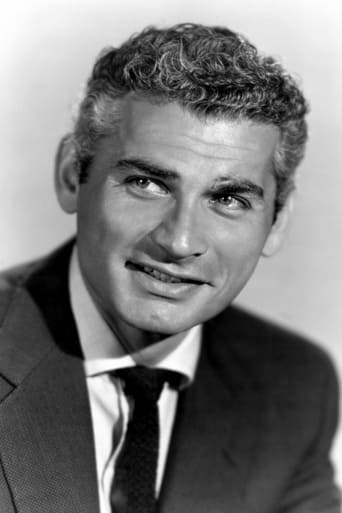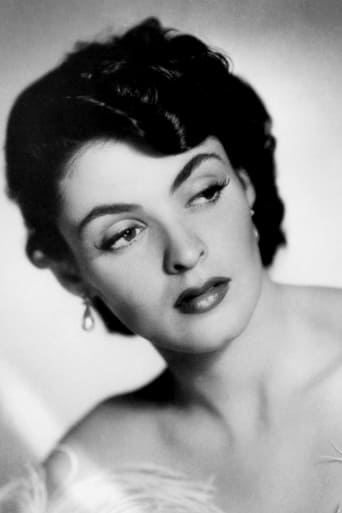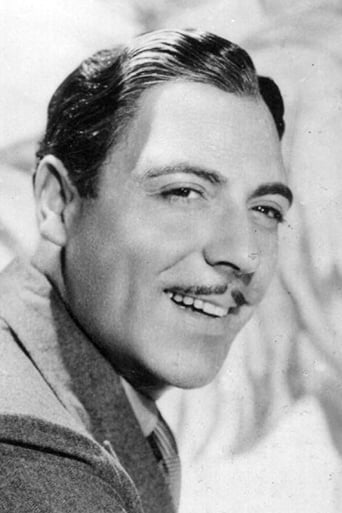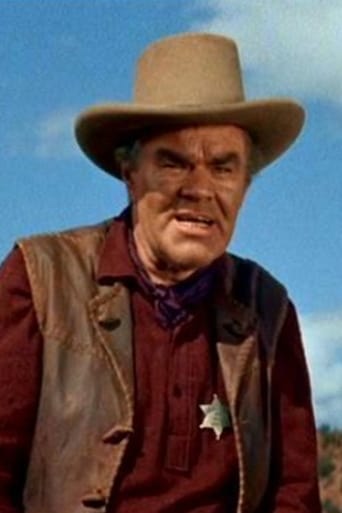duke1029
"Yankee Buccaneer" is based on a historically fictional screenplay hurriedly put together when Errol Flynn hurt himself during the filming of "Against All Flags' at Universal, and it became apparent that the actor would need considerable time to recuperate. It was decided to utilize the standing sets and personnel and turn out this B picture programmer depicting two of the most famous figures in American Naval history, David Porter and David Farragut.As portrayed by Jeff Chandler, Porter is a martinet and stickler for regulations who is particularly hard on his first officer, David Farragut. As portrayed by Scott Brady, Farragut is brash and prone to be insubordinate, In real life, although both men served in the 1821 - 1825 War against the Caribbean pirates, they did not serve on the same ship, and the screenplay about Porter's going undercover as a privateer never happened.Too bad the Tinseltown writers didn't follow real history, which would have made a much more interesting story. Farragut (born 1801) was actually the adopted son of Porter (born 1780), and that's a story in itself. Porter's father David Porter Sr., a Revolutionary War veteran, met and befriended another naval veteran, Spanish-born Jordi Farragut, a former Spanish merchant captain. Suffering from tuberculosis and sunstroke, Porter Sr. died as a guest in the Farragut home. In a tragic coincidence, Farragut's Scots-Irish wife Elizabeth passed away from yellow fever the very same day.Porter, Jr., visited the Farragut family to express his thanks for their care of his father and sympathy for the death of its matriarch. Despite having ten surviving children of his own, including six sons, Porter, Jr., offered to adopt Jordi's seven year old son, James Glasgow Farragut. Out of gratitude, the young Farragut changed his name to David Farragut. David Porter was already a veteran of the Undeclared War against France, the Barbary Pirate War, and was first to capture a British ship in the War of 1812. Young Farragut enlisted in the Navy in 1810 at the tender age of nine and was very active during the War of 1812 including being wounded and captured by the British in 1814 off the coast of Chile. The real Porter had the reputation of being a hard drinker and often caroused with friends including renowned writer Washington Irving. In the film however, the drinking is left to his chief petty officer, played by George Matthews, as Porter conveniently looks the other way.After the War of 1812 was over, pirate activity literally exploded in the Caribbean. Between 1815-1823, there were over 3000 documented acts of piracy in the region. Spanish gold was no longer the prime target, and commercial goods like sugar, rum, dyes, and coffee were plundered by the corsairs, whose chief centers of operation were Puerto Rico, Hispaniola, and especially Cuba. The pirates, some of whom were Americans, were a bloodthirsty lot who were not above butchering the passengers as well as the crews of the victim ships. This interruption of the free market affected the American economy to such a point that President Monroe authorized the creation of a West Indian squadron of ships in 1821 to eradicate the problem.Farragut served as a lieutenant during the conflict beginning in 1821, and Porter gave up an influential post to be the Commander of Operations in the Caribbean in 1822. Eradicating the pirates was very difficult because many operated out of coastal swamps and rivers, which were too shallow for Porter's bigger ships to navigate. His fleet included sixteen large vessels, several of which were financed and outfitted personally by him, and five "Mosquito" ships, which he used to pursue the buccaneers into inland waterways. Farragut commanded one of these smaller "Mosquito Fleet" boats and did not serve on the same boat as Porter as the film depicts.Things did not turn out happily for Porter. American policy dictated that captured pirates not be brought to the U.S. for trial but be turned over to the local government. This frustrated Porter because it was routine for the pirates to bribe their way out of the charges and return to plundering. Even the hero of the Battle of New Orleans, Jean Lafitte, returned to the Jolly Roger and was released after his capture after paying off a local official. (Ironically he was killed on the high seas shortly after by one of his fellow buccaneers.)When one of his officers was imprisoned by the local government in the Spanish town of Fajardo, Puerto Rico, an enraged Porter invaded the town. As Spain was an American ally at the time, this was an unsanctioned action, and Porter was court-martialed and suspended. In the film, Porter forces a duplicitous Spanish envoy to walk the plank in order to get evidence of his collusion with the pirates, and the film ends with his anticipation of being court-martialed for these actions, not the invasion of Fajardo.A disgruntled Porter resigned to become commander-in-chief of the Mexican Navy (1826-1829) but subsequently repatriated himself upon his return to the States and was appointed Minister of the Barbary States. He died in 1843 aged 63 while serving as Ambassador to Turkey.David Farragut, his adopted son and namesake, served honorably during the Mexican War and was the North's greatest naval hero of the Civil War. He died in 1870.




